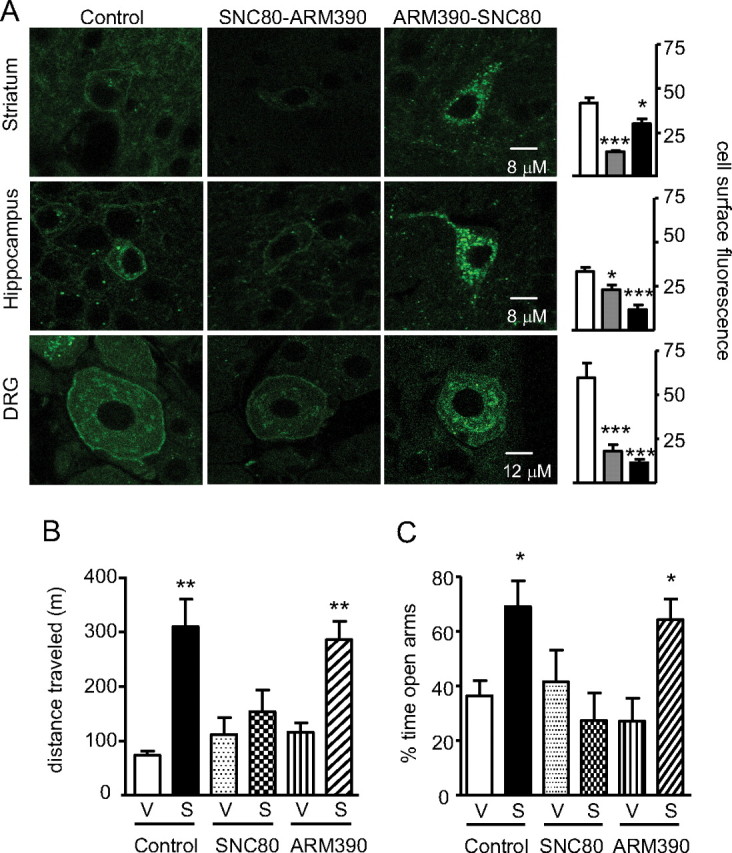Figure 5.

Chronic ARM390 induces analgesic tolerance only, leaving other δ-opioid receptor responses intact. A, SNC80-induced internalization in SNC80- and ARM390-tolerant animals. Striatum, hippocampus, and dorsal root ganglia were analyzed by confocal microscopy, and representative images are shown. Mean cell surface fluorescence was quantified in 3–4 sections per region per mouse. White bars, control group; gray bars, SNC80 group; black bars, ARM390 group; *p < 0.05, ***p < 0.001, one-way ANOVA, n = 3–4 mice/group. After chronic ARM390, surface δ receptors can be internalized by SNC80. B, SNC80-induced locomotor activation in SNC80- and ARM390-tolerant animals. Wild-type C57BL/6J mice were chronically treated with vehicle, SNC80, or ARM390, following which they were challenged with either vehicle or SNC80 (3 mg/kg, i.p.). For drug effects, **p < 0.01, as determined by multiple t tests with Bonferroni corrections, n = 5–6 mice/group. Control and ARM390-tolerant animals, but not SNC80-tolerant animals, showed SNC80-induced locomotor activation. C, SNC80-induced anxiolysis in SNC80- and ARM390-tolerant animals. Wild-type C57BL/6J mice were made tolerant to SNC80 or ARM390, and all groups were challenged with either vehicle or SNC80 (10 mg/kg, s.c.), and tested in the elevated plus maze. Data represent the percentage time spent in the open arms compared with total time spent in open and closed arms. For drug effects, **p < 0.01, *p < 0.05 as determined by multiple t tests with Bonferroni corrections, n = 5–6 mice/group. Control and ARM390-tolerant animals, but not SNC80-tolerant animals, showed an SNC80-induced anxiolysis. Altogether, chronic SNC80 produces generalized behavioral tolerance, while chronic ARM390 induces analgesic tolerance only.
